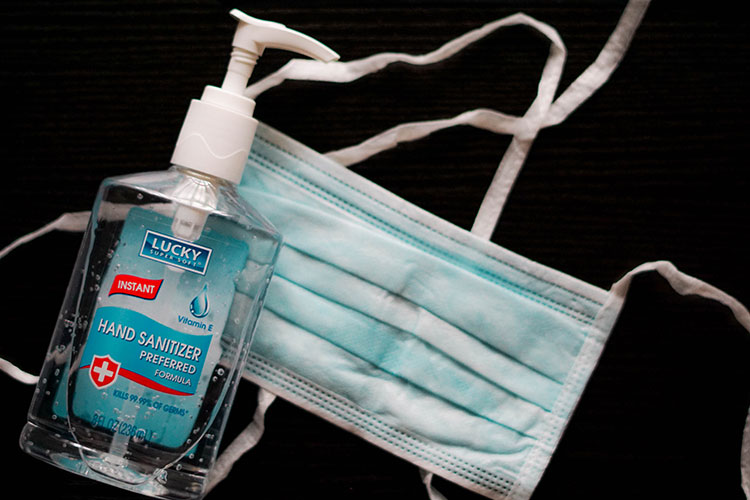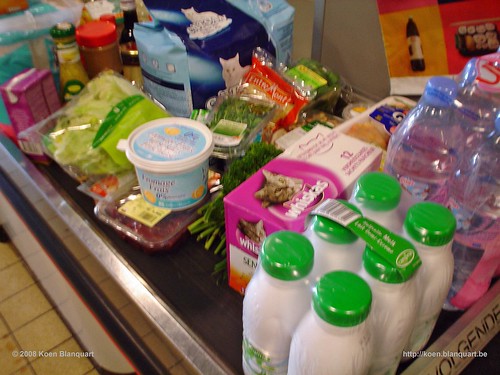Misuse of and Misunderstanding Personal Protective Equipment and Procedures
By Charles Gray, MD
I have been out a few times for groceries and observed dangerous misuse of Personal Protective Equipment (PPE) and other sanitary practices as it relates to COVID-19 prevention. It is obvious that many people misunderstand the role of PPE and other procedures to keep yourself from infection and keep others safe.
 Sterile procedures do not come naturally and require education and practice to be effective. For the uninitiated, it has been boiled down to “social distancing,” “don’t touch your face,” and “hand washing.” All are good practices, but potentially provide a false sense of security. The following may seem a little excessive, but remember the devil is in the details. This is my synopsis of protective measures that can help to keep you safe.
Sterile procedures do not come naturally and require education and practice to be effective. For the uninitiated, it has been boiled down to “social distancing,” “don’t touch your face,” and “hand washing.” All are good practices, but potentially provide a false sense of security. The following may seem a little excessive, but remember the devil is in the details. This is my synopsis of protective measures that can help to keep you safe.
Around 25% of individuals who get COVID-19 demonstrate no symptoms … ever. Even those who develop symptoms eventually will have a delay in the onset of symptoms (the reason for the notion of the 2-week self-isolation).
Because of this delay in onset of symptoms, at any one time, as many as 50% of infected individuals may show no symptoms. Both of these COVID-19 groups are capable of transmitting the virus to others and unknowingly perpetuating the spread of the pandemic.
Most people who develop symptoms will recover, but there is no information on the long-term consequences of the lung damage the virus leaves behind (fibrosis that can occur with this particular virus). A recent report in a respected medical journal (The Lancet), surmises that the overall death rate is around 1.5 % (much higher in the elderly), making it as much as 33 times more deadly than routine seasonal flu.
Additionally, the ability of the virus to survive outside the body on inanimate surfaces (called fomites in medical terms) is amazing. It can live for days on non-porous surfaces (plastic, steel, glass, etc.) and shorter durations on porous surfaces (clothing, paper), but both depend on how much moisture and nutrient media are deposited with the contamination. Reports of favorable conditions for viral survival outside the body have not been fully studied.
However, it is likely that moist/humid conditions and low temperatures would likely favor survival of the virus on fomites, as they lurk about waiting for some unsuspecting individual to lift them off the surface and infect themselves or another person.
I was out in public yesterday and observed some of these dangerous misconceptions in practice. I will address each item separately after laying out the observations:
- A woman in the checkout stand wearing a mask and plastic gloves punched in her debit card code and then immediately touched her eyeglasses.
- A man was wearing a surgical mask, but it did not cover his nose.
- A clinic nurse suggested I have a seat in a chair that had just been vacated by another patient, but not sanitized.
- A clinical technician (blood drawing) proceeded to touch many objects around the patient seating area after putting on sterile gloves before she got to me and the procedure used to draw blood.
Let’s start with, “How you can get the virus?”
Predominantly, the virus needs to come into direct contact with some part of the respiratory mucosa. The virus can be picked up by touching an object that an infected person has touched or through breathing in fine droplets hanging in the air.
The mouth and nose are probably obvious routes of entry. This would include breathing in fine droplets or putting the virus directly on your face by contaminated hands. The eyes (possibly less obvious) are connected to the nose by lacrimal ducts. Anything in the eye mucosa eventually makes it down the lacrimal ducts into the nasal cavity, then to the throat, and then to the lungs.
These are the reasons for the “don’t touch your face” edict. Once the virus is deposited on the face, it’s a short journey to one of the susceptible mucous membranes and then to the lungs.
A recent report suggested that another possible route of infection involves the gastrointestinal tract and its contents. However, there is not even a suggestion that the virus can pass through the skin to infect a person.
What is a “sanitizing agent?”
Mostly, these are liquids that can kill the virus. The likely best and least complicated sanitizing agent is alcohol. It evaporates and leaves no residue.
According to authorities a minimum of 60% alcohol (by volume) is needed. That would be mixing 6 parts of 100% alcohol with 4 parts of distilled (or purified) water.
A common alcohol preparation is “Rubbing Alcohol.” Most are listed as a 70% solution, but some are only 50% and may not be strong enough to reliably kill the virus (but still better than nothing). “Rubbing Alcohol” generally is made of isopropyl alcohol (or isopropanol) and is also termed “IPA” (IsoPropyl Alcohol). IPA is also available as an almost pure laboratory reagent (99% to 99.9%) which could be diluted (as described above) to a 60% solution.
This is also available as alcohol wipes (good for wiping hands, etc.).
Another common alcohol is ethanol. This is the alcohol that is in your favorite “adult beverage.” However, the alcohol concentration in almost all liquors is not sufficient to reliably kill the virus (a “90 Proof” liquor is only 45% alcohol) and what a waste anyway. If you get desperate, there is an ethanol that is strong enough and available in some liquor stores (Everclear 190 Proof or 95% alcohol).
Another ethanol preparation is “Denatured Alcohol,” but it is poisonous and should not be used directly on your skin (see the note below).
There are many other “hand sanitizer” solutions that are liquids or gels (aloe based is a popular item) and are recommended for personal sanitizing use on your hands. They’re not good for sanitizing items (cans, bottles, etc.) because they can leave behind a residue.
Unfortunately, store shelves have been cleared out of these common items and sold on the secondary market at ridiculously inflated prices (“Capitalism” at its worst). In the absence of any of the agents listed above, don’t forget good old soap and water washing of hands and possibly many other items that may be contaminated.
Much discussion has centered around the utility of using a protective mask.
Some of this resistance to recommend the use of masks when out in public has been due to the lack of adequate protective equipment for medical personnel and the fear that a recommendation to use a mask would further compromise the already short supply of masks needed for medical personnel. This is extremely important because if we lose our medical staff through illness/death, we lose the war on this virus.
However, recent information indicates the just through normal speaking an infected individual can send out a fine spray of droplets. If in close enough proximity, one could breathe in enough of those droplets to get infected. For this reason [I assume] it the recommendation for ALL individuals to wear some sort of protective mask when out in public spaces (you should only out when absolutely necessary).
You may have noticed that medical personnel also use face shields to prevent deposit of the virus in the eyes if someone coughs on them. Unless your nose is blocked you generally breathe through your nose. So, to be effective, the mask must cover both the nose and mouth.
I have seen many people wearing a mask, but not covering their nose. This could easily provide a false sense of security. You may reuse your personal mask, but remember the virus can live on porous surfaces, particularly if is moist (which a mask will be). It would good practice to spray your mask with 60% alcohol (or higher) or wash it to kill any viral hitchhikers between uses.
NOTE: Do NOT put the mask on while it is wet with alcohol (except pure ethanol). Also remember that if the mask has done its job, it may have virus trapped and you need to sanitize your hands any time you even touch your mask (washing, alcohol, or other hand sanitizer).
Wearing a mask of any cloth or porous paper can help to prevent both you from breathing in someone else’s infected droplets and you from spreading your infected droplets if you are one of those that is infected but not showing symptoms.
How about protective gloves (and surgical gowns)?
If not used properly, they do not help and could give one a false sense of protection.
You would not think it appropriate for a surgeon to move from one operating room to another without changing their protective gloves and gown. This behavior might protect the surgeon, but not the patient.
In the same vein, if you put on gloves, they only keep the virus from being lodged in the many crevices on your skin and fingernails. If there is virus on something you touch, then it will be on your gloves. If you then touch your face with your gloved hand, you have defeated the purpose of wearing the gloves.
It might be useful to think about the situation in the following way: Everything is coated with a layer of used and dirty automotive grease. If it helps to accentuate to point, it’s radioactive grease. Also, you are wearing your best clothes and everyone around you is in white formal wear. If you touch anything, you have the [radioactive] grease on your gloved hands, and anything or anyone else you touch will have this nasty grease transferred to them.
So, only touch things you have to touch, do not touch your face, and do not touch another person until you have removed those dirty gloves (or sanitized them just like you would clean your hands… probably not with hand sanitizer).
Remember that medical personnel (unless they change gloves between each patient) can transfer the virus from an infected patient to an uninfected patient. Therefore, it may be obvious by this point, stay away from hospitals and clinics unless it is absolutely necessary.
We must eat (and drink) to live.
 However, grocery shopping (or any other type of shopping) could be a deadly enterprise. You have no idea of whether or not whoever previously touched that item (can, bottle, bag, or fresh produce) was infected or not.
However, grocery shopping (or any other type of shopping) could be a deadly enterprise. You have no idea of whether or not whoever previously touched that item (can, bottle, bag, or fresh produce) was infected or not.
Treat every touch of any item in any store as a potential exposure of your hands (even if wearing gloves) to the virus. I personally carry a small spray bottle of alcohol with me when I’m out. I spray the handles on the shopping cart or basket before I start.
I am mindful to not touch my face (or eyeglasses) at any time while shopping (unless I have sprayed my hands with alcohol, or used hand sanitizer).
If you use your reusable grocery bags, you should wash or sanitize them between uses. I think of anything in my shopping cart and eventually shopping bags as being potentially contaminated, including the bags themselves. If possible do not put the bags on your car seats during transport.
When you get your items home, do NOT put the bags on your kitchen counter. I put the bags by my front door and have a tray that I have sprayed with alcohol. I take each item from the bag, spray it with alcohol, and place it on the tray.
After I have removed all items from the bag(s), I spray the bags as well. Let everything dry (outside, if possible) before putting the items away. Also, before you touch the items again, wash your hands.
Fresh produce presents its own set of problems. You should consider rinsing/washing everything off before you eat it. Remember, some items have a light coating of wax or oil (to make them look better) that may more effectively retain the virus.
Someone far away has touched those fresh produce items and you (or they) do not know whether or not they are infected.
NOTE: This is a valid consideration, even under normal conditions, as a possible route of transmission for things like hepatitis or E. coli.
This is a very stressful and possibly sobering situation for everyone. Stay safe by paying attention to even the smallest detail … ’cus the virus is extremely small and deserves the attention.
Denatured Alcohol Note: A substitute for isopropyl alcohol (currently hard to find at a reasonable price) for sterilizing items is “Denatured Alcohol.” It is available in hardware stores. It is 100% alcohol (ethanol, as in your favorite liquor), but it has from 5% to 60% methanol added (deadly if consumed). It can also be toxic by direct absorption through the skin. This could be sprayed on plastic gloves, cans, bottles, plastics, etc. to sanitize them, but you should avoid spraying it on your skin. It could likely be used on produce that has a generally impermeable skin (for example, citrus). It evaporates quickly and leaves nothing behind. However, if you use this, you should use it outside and leave the items there to dry.



